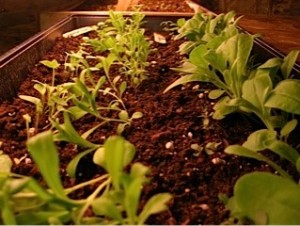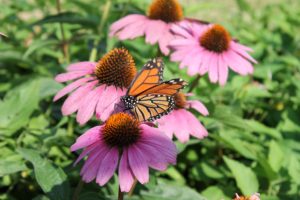Hello Fellow Readers,
Last week we spoke about starting annual seeds indoors. John from Hope NJ asked if he could start perennial seeds indoors too. “Or should I start them directly in the ground?” For the benefit of gardening newbies, perennials are herbaceous (non-woody) plants that come back year after year. Most perennials don’t produce flowers until their second year. During their first year of growth, they’re busy developing roots and storing food and nutrients.
Starting perennials indoors is much like starting annuals, though they are slower to germinate taking up to a month or more to sprout. So, start them ten weeks before the last frost date rather than the rule of thumb eight weeks for annual seeds. Our last frost date is typically about May 19th here which means we’re beyond the ten-week mark. But go ahead and get them going as you’ll still be ahead of the game.
Many catalogs lure us with perennial seeds that are tough to start, but there are easy-to-grow perennials that often bloom in their first growing season if you provide them a head start inside. A few I favor are Tickseed (Coreopsis), Maiden Pinks (Dianthus), Catmint (Nepeta), Blanket flower (Gaillardia), Anise Hyssop (Agastache), Yarrow (Achillea), and Shasta daisy (Leucanthemum) – all are medium to high in deer resistance. They can easily be started directly in the soil as well but may not bloom the first year. When sowing directly in the garden the trick is remembering where you put them, maybe it just me, so they won’t be mistaken as weeds. My workaround – a specific area set aside for seed starting, a nursery garden of sorts, where the new babies can be closely monitored and tended to.
By sowing perennial seeds directly in the garden late in the growing season, they’ll have the winter to develop roots which can help jumpstart their blooming cycle in the first year. The young plants may need winter protection though, another case for having a nursery garden. Follow the seed packet protocols and cultural requirements for the plants themselves (preference for sun versus shade and moist soil or dry) to choose where to sow them.
It may seem obvious that perennials that are ambitious self-seeders are easy to start directly in the ground too. For example, our native Purple Coneflower (Echinacea purpurea) a well-known medicinal plant with large purple flowers and showy orangey spiked seed heads. Then there’s Black-eyed Susan, (Rudbeckia fulgida), a glorious golden North American native. Be warned some call her “rude Becky” as she can spread rapidly and squelch others. Same can be true of Purple Coneflower, but that’s when sharing plants come in. Or, weeding them out if necessary. Besides both bloom from summer to frost and attract butterflies – there’s nothing rude about that. Garden Dilemmas? AskMaryStone@gmail.com
I invite you to read a previous column, Green with Envy Seed Starting Tips, thanks to Patti Doell, a flower farmer, and owner of Little Big Farm.
 Speaking of seeds… These special snow campers were built by children during Comfort Zone Camp last weekend (a grief camp for kids and young adults). The temperature warmed as “the bubble” of camp came to an end, always hard to say goodbye. But the seeds of healing and growing will continue… and there’s happiness in knowing that “Mark Forsty” (love the spelling) will be back again someday. https://www.comfortzonecamp.org/
Speaking of seeds… These special snow campers were built by children during Comfort Zone Camp last weekend (a grief camp for kids and young adults). The temperature warmed as “the bubble” of camp came to an end, always hard to say goodbye. But the seeds of healing and growing will continue… and there’s happiness in knowing that “Mark Forsty” (love the spelling) will be back again someday. https://www.comfortzonecamp.org/




